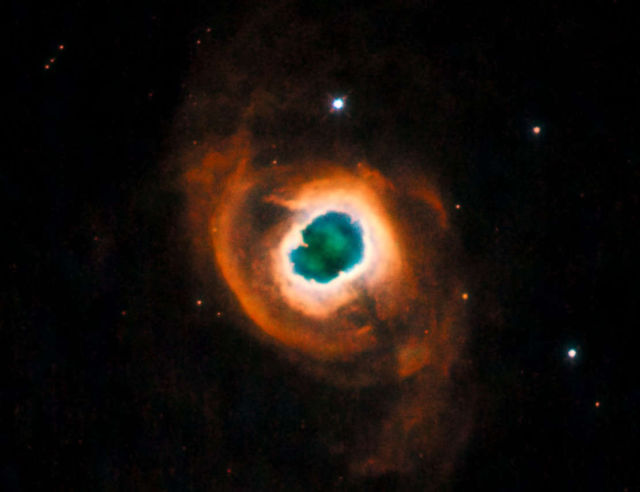A dying star‘s final act of celestial beauty before the long fade into cosmic history, offers glimpse of our Sun’s future.
Invisibly buried in the center of this colorful swirl of gas is a dying star, roughly the same mass as the Sun.
As a star ages, the nuclear reactions that keep it shining begin to falter. This uncertain energy generation causes the stars to pulsate in an irregular way, casting off its outer layers into space.
As the star sheds these outer gases, the super-hot core is revealed. It gives off huge quantities of ultraviolet light, and this radiation causes the gas shells to glow, creating the fragile beauty of the nebula.
This example is known as Kohoutek 4-55. Named after its discoverer, the Czech astronomer Luboš Kohoutec, it is located 4600 light years from Earth, in the direction of the constellation Cygnus.
This particular shot is a composite of three images, each taken at a specific wavelength to isolate the light coming from particular atoms of gas. The different wavelengths have been colour-coded to aid recognition.
Red signifies nitrogen gas, green shows hydrogen and blue represents oxygen. The whole sequence was captured in 2 hours on 4 May 2009.
Copyright: NASA, ESA and the Hubble Heritage Team (STScI/AURA). Acknowledgment: R. Sahai and J. Trauger (Jet Propulsion Laboratory)
source ESA






Leave A Comment